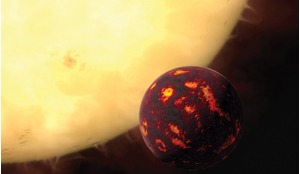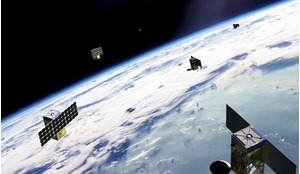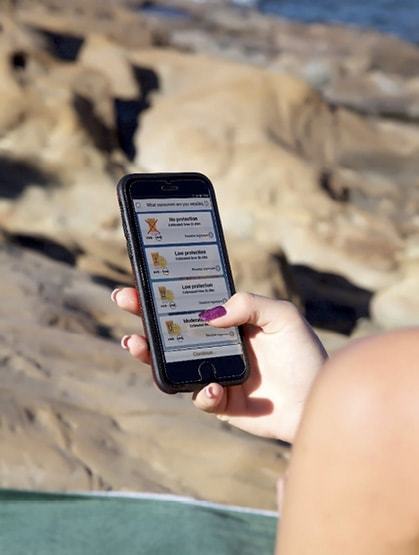 As the space industry booms it is becoming more accessible to communities outside of specialist teams. This means that opportunities for putting the technology to use in other industries are increasing considerably. Developments in the space sector are already improving our daily lives and, as it rapidly pervades the healthcare sector amongst others, we’re beginning to see more cases that demonstrate its positive presence. Here, Barbara Ghinelli explains the importance of cross-fertilisation between space technology and other industries, and looks at some of the latest applications in healthcare.
As the space industry booms it is becoming more accessible to communities outside of specialist teams. This means that opportunities for putting the technology to use in other industries are increasing considerably. Developments in the space sector are already improving our daily lives and, as it rapidly pervades the healthcare sector amongst others, we’re beginning to see more cases that demonstrate its positive presence. Here, Barbara Ghinelli explains the importance of cross-fertilisation between space technology and other industries, and looks at some of the latest applications in healthcare.
In many parts of the world, technology that was originally intended for use in space is now prevalent in other industries. For example, the European Space Agency (ESA) developed suits with embedded biomedical sensors to study how the human body responds to living in space - technology that led to the creation of a baby monitoring system to protect against cot deaths. Similarly, microbiological sensors for space applications can be used to detect contamination for better water treatment, and NASA’s handling of hydrogen has paved the way for developing lightweight hydrogen tanks for environmentally friendly cars.
The space industry is currently experiencing rapid growth in relation to investment and commercial interest as the possibilities and opportunities it wields become more widely known. Increasingly it is realised that science should not be siloed, and healthcare is one of the industries taking full advantage of the opportunities for collaboration that this approach presents. The importance of cross-sector working has never been so relevant.
The health sector is no stranger to space technology, with applications in ultra-light robots for surgery and the production of artificial organs and prostheses. Previous uses also include a ‘pill camera’, developed by researchers at the Fraunhofer Institute, that can be swallowed by patients; dementia-tracking slippers which use GPS, and technology developed for space travel used for breast screening vans.
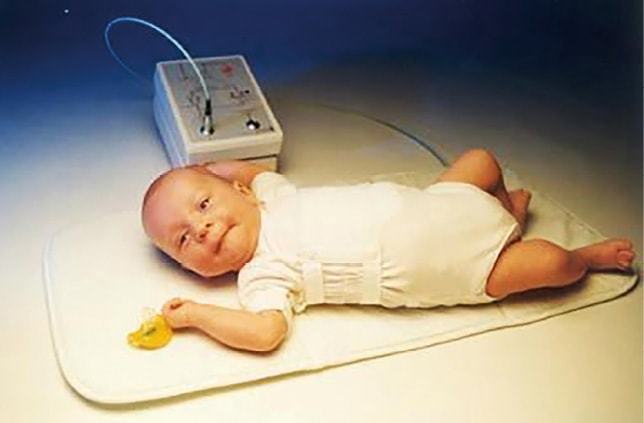 ESA’s development of space suits with embedded biomedical sensors led to the creation of a baby monitoring system to protect against cot deaths.
ESA’s development of space suits with embedded biomedical sensors led to the creation of a baby monitoring system to protect against cot deaths.
Harnessing space innovation
Most space innovation is no longer about tackling issues and unveiling patterns in outer space - it’s very much becoming a tool to improve life here on Earth
Space innovation may originally have been about tackling issues and unveiling patterns in outer space – but today it’s very much becoming a tool to improve life here on Earth.
For example, earlier this year the UK Space Agency granted Adaptix £1 million in funding to develop a pioneering portable 3D medical x-ray machine, based on technology used to study stars in distant galaxies. Working on Harwell Science and Innovation Campus, the scientists realised that – as well as providing access to previously unreachable parts of our universe – the technology would allow doctors to get a more comprehensive view of areas where they suspect tumours are growing, aiding more effective treatment and earlier diagnosis. Health and space-heritage technology may seem an unlikely partnership, but it is one that has led directly to life-saving technology.
The Adaptix devices include field emitters etched into silicon wafers used previously in ion thrusters for spacecraft, and x-ray optics deployed on star-mapping spacecraft, such as ESA’s XMM Newton mission. This is the one of the biggest satellites ever built in Europe, with some of the most powerful telescopic mirrors ever, and cameras that can see much more than any previous x-ray satellite.
There are many other cases where technology originally developed for space exploration has been put to good use in healthcare.
For instance, by adapting a small 3D camera originally designed for investigating scientific samples on the Moon, start-up company 3D-oscopy has created an endoscope camera that can quickly record and digitally recreate a human tract. For clinicians, it means they can examine detailed footage of the tract off-line, rather than in real-time while the camera is inside the patient, with quantification tools to further inform their recommendations on surgery and treatments. For the patients, this means endoscopy time is drastically reduced, only requiring the camera to make one pass into and out of the tract, recording any features. For the health care system, it means shorter waiting times, more efficient use of funds, and better patient outcomes.
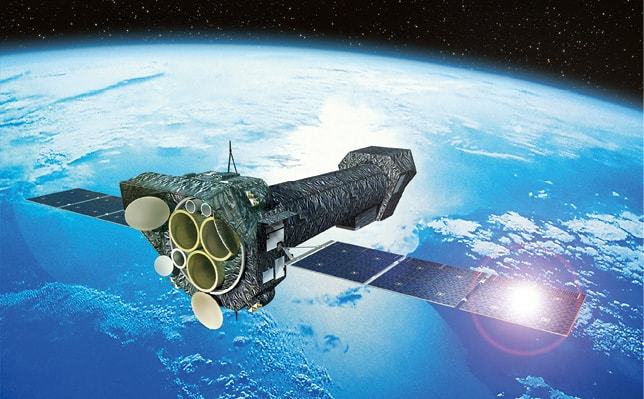 X-ray optics deployed on star-mapping spacecraft, such as ESA’s XMM Newton mission launched in 1999, have been re-purposed by companies such as Adaptix allowing doctors to get a more comprehensive view of areas in patients where they suspect tumours are growing, aiding more effective treatment and earlier diagnosis.
X-ray optics deployed on star-mapping spacecraft, such as ESA’s XMM Newton mission launched in 1999, have been re-purposed by companies such as Adaptix allowing doctors to get a more comprehensive view of areas in patients where they suspect tumours are growing, aiding more effective treatment and earlier diagnosis.
It’s not only space hardware that has application in healthcare, but also the satellite-derived data that is increasingly important to our everyday lives.
siHealth is one example of a company successfully combining satellite and ground-based data to improve health outcomes. It uses satellite observations of Earth to allow people to manage their exposure to sunlight through a smartphone app. Exposure to sunlight brings risks and benefits – too little or too much can be bad for your health. Each person’s skin requires and tolerates different amounts of sunlight based on demographics such as age, skin-tone and lifestyle. Localised pollution can also work with the sunlight to increase damage, resulting in a complex series of factors which make it difficult for individuals to manage their individual exposure unaided. siHealth has recently announced a strategic alliance with German chemical company BASF to market scientifically-based satellite and optronic technologies to the personal care industry.
![]() The capsule technology of the ‘pill tracker’, developed at the Fraunhofer Institute, can be used to diagnose the cause of gastrointestinal bleeding symptoms much faster.
The capsule technology of the ‘pill tracker’, developed at the Fraunhofer Institute, can be used to diagnose the cause of gastrointestinal bleeding symptoms much faster.
In another example, the UK’s National Health Service has a shortage of doctors to staff local medical practices, leading to significant issues for some regions. This can lead to ailments becoming more severe than if treated quickly, and can add strain to local hospitals when patients, unable to book appointments at their local doctor’s surgery, access the healthcare system via Accident and Emergency units. TekiHealth, a company established by two doctors, has devised a remote diagnostic solution. Through satellite technology, TekiHealth provides high bandwidth links that allow people to be examined at their local doctor’s surgery by a qualified medical doctor located elsewhere. This modern approach to doctor-patient consultation is alleviating delays caused by shortage of local staff and is improving patient outcomes.
 siHealth uses satellite observations of Earth to allow people to manage their exposure to sunlight through a smartphone app.
siHealth uses satellite observations of Earth to allow people to manage their exposure to sunlight through a smartphone app.
Space exploration
Health and space-heritage technology may seem like an unlikely partnership, but it is one that has led directly to life-saving technology
It’s not just spin-off technology that can benefit healthcare back on Earth. As humans push ever further into the solar system in the next decades, the need to keep astronauts healthy in an alien and dangerous environment, potentially days or months away from Earthbound medical support infrastructure, is likely to drive healthcare techniques and produce technology that will yield collateral benefits on Earth. For example, sophisticated tele-medicine and tele-surgical solutions, supported by artificial intelligence, would be of great benefit for both routine and emergency healthcare needs in a lunar colony, and would also have many applications on Earth. Similarly, the needs of space exploration are sure to drive ever more portable and lightweight medical diagnosis equipment to monitor the health of astronauts and their environment, so as to mitigate issues before they become serious.
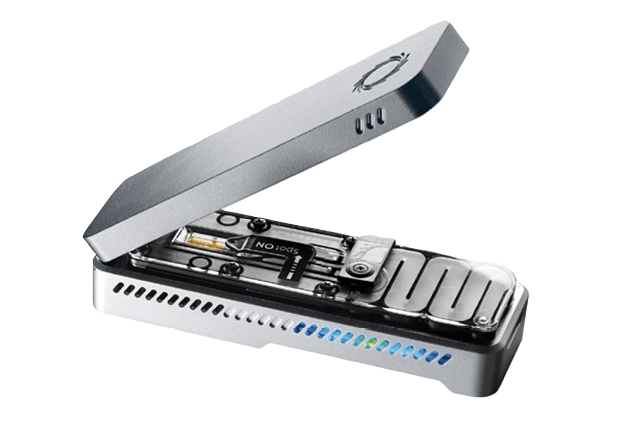 Oxford Nanopore’s portable DNA sequencer, MinION, has been used on the International Space Station to sequence both DNA and RNA.
Oxford Nanopore’s portable DNA sequencer, MinION, has been used on the International Space Station to sequence both DNA and RNA.
Though not originally developed for space applications, Oxford Nanopore’s portable DNA sequencer, MinION, has now been used on the International Space Station (ISS) to sequence both DNA and RNA. This can, for example, be used to identify microorganisms that might be onboard, to understand whether they are harmful, and if so what to do about them. Imagine for example a drug-resistant bacteria on the ISS; astronauts will wish to choose the right antibiotic.
DNA analysis might be used to monitor changes in human health or microbiomes in response to spaceflight, and to conduct biomedical research in microgravity. Devices such as this will become ever more important in monitoring isolated, closed environments, be they in a spacecraft or on an extraterrestrial body. But the portable DNA sequencer is already being used on Earth to understand cancer, infectious disease and biodiversity. As such ventures become more common and extensive, they are very likely to become technology drivers that will result in unexpected benefits here on Earth.
As well as being a technology driver, the space environment is also a unique laboratory for life science studies. The microgravity and radiation environment of space, as well as more subtle effects such as different diurnal patterns, extends the parameters for studying how living organisms respond to unusual stimuli, and thus to understand the fundamental processes at work within living things.
It is vital to study how humans respond to extended exposure to the space environment to determine how, as a species, we can safely extend our presence in the solar system. Many of these responses mimic the effects of natural ageing here on Earth, providing a fresh window on the processes that determine, for example, bone density loss as we grow older. As the availability of study time on the ISS and future facilities of this kind increases, so the scope and sophistication of such research will multiply. Already the range of such work is impressive. To take just one example, the company Kayser Space on the Harwell Campus is currently working on three different life science investigations on the ISS:
- With the Institute of Ageing and Chronic Disease of the University of Liverpool to determine whether an inability of muscles in older humans and animals to respond appropriately to exercise also manifests in a microgravity environment
- With the Royal Derby Hospital to investigate which molecules control the biological response to spaceflight by studying the commonly used analogue worm C. elegans
- As a partner in ‘Bioreactor Express’, a new initiative aimed at the commercial exploitation of an incubator facility on the ISS.
As well as being a technology driver, the space environment is also a unique laboratory for life science studies
We are still very much in the learning phase when it comes to the utility of the space environment for advancing the life sciences, but as experience grows and opportunities become more frequent and easier to access, we can expect a growth in both research and commercial application, driving forward both technology and scientific knowledge.
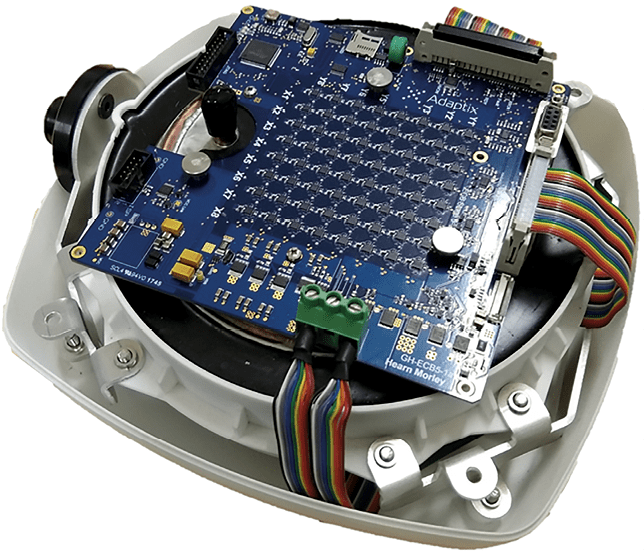 The Adaptix 3D X-ray machine is based on technologies currently used to scan distant stars. The UK’s National Health Service hopes that repurposing this technology into a form that can be used in practical healthcare settings will save clinicians and patients time, as well as improve detection rates for cancer.
The Adaptix 3D X-ray machine is based on technologies currently used to scan distant stars. The UK’s National Health Service hopes that repurposing this technology into a form that can be used in practical healthcare settings will save clinicians and patients time, as well as improve detection rates for cancer.
Applications in other industries
The value of cross-collaboration between space technology and other industries beyond just healthcare has also become very apparent. For example, the energy sector is adopting space technology to build better clean energy systems and solutions that have a positive environmental impact.
Mirico, an SME based within the Harwell cluster of 92 space organisations, is one example of a company that has successfully taken technology developed for space and applied it to the energy sector. In developing its laser gas-sensing technology, originally designed to measure atmospheric constituents in space, it found that the technology could be deployed to accurately measure atmospheric pollutants for energy companies, helping them to determine where to focus their efforts in improving the efficiency and safety of operations.
It is evident, therefore, that taking an innovative, cross-industry approach to problem solving in energy and environmental issues is effective, as in the case of Mirico which repurposed a technology developed as a result of more than ten years of cutting-edge Earth observation and planetary exploration.
Embracing transformation
The worlds of science and technology already intersect with almost every industry, sector and aspect of life
The worlds of science and technology already intersect with almost every industry, sector and aspect of life. In the case of healthcare, a report by Hewlett Packard subsidiary Aruba predicts the next five to ten years will see massive disruptions in this arena, with artificial intelligence playing an increasing role in diagnosis and treatment by 2030.
Technologies or applications being used in this sector are testament to the powerful advantage of working in close proximity with organisations outside a sector’s usual market. Through shared learning and collaboration, new business opportunities are identified and innovative solutions to long standing problems are created. As with the healthcare sector, this is a huge advantage more generally and one that will continue to grow and develop.
To truly thrive, it’s important for collaboration to be more diverse, and that the public sector is closely linked with fast growth SMEs and multinationals. In this way, we can better collaborate, co-fund and problem solve, ultimately developing innovative technologies that create new markets, resulting in job creation and economic growth.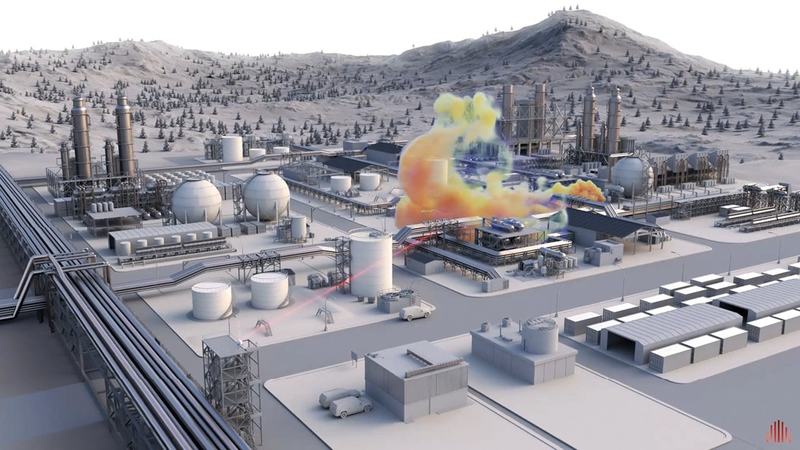 Mirico found that Laser Dispersion Spectroscopy (LDS), a laser gas-sensing technology originally designed to measure atmospheric constituents in space, could be deployed to accurately measure atmospheric pollutants for energy companies.
Mirico found that Laser Dispersion Spectroscopy (LDS), a laser gas-sensing technology originally designed to measure atmospheric constituents in space, could be deployed to accurately measure atmospheric pollutants for energy companies.
About the author
Dr Barbara Ghinelli is the director of Harwell Campus Cluster Development, having joined STFC in 2010 as Executive Director of Business Development. Before joining STFC, Barbara worked at EADS Astrium (now Airbus DS) where she managed Business Development across Europe for the €3.2 billion joint ESA-EU Copernicus programme. She has a BEng in Electronic Engineering from the University of York, a PhD in Artificial Intelligence and Satellite Radar Imaging from the University of Sheffield and a Certificate in Management from the Open University.









